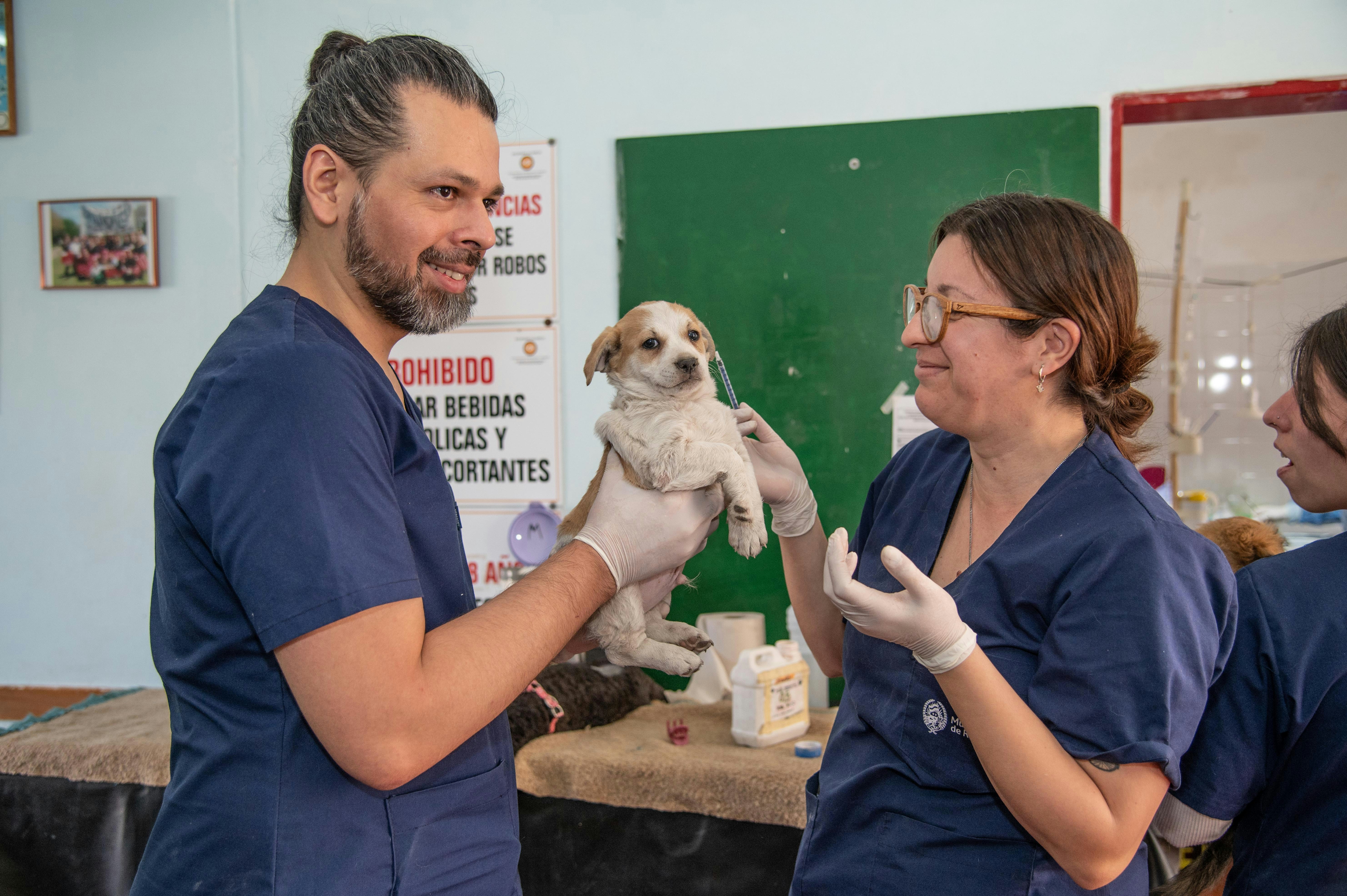The Future of Veterinary Medicine: How Technology Is Changing Pet Healthcare

The Future of Veterinary Medicine: How Technology Is Changing Pet Healthcare
The field of veterinary medicine has advanced tremendously over the past few decades. Once limited to traditional diagnostic tools and basic treatments, veterinary care is now undergoing a technological revolution . From telemedicine and wearable devices to AI-assisted diagnostics and genetic testing, modern innovations are reshaping how pets are diagnosed, treated, and cared for.
This transformation not only improves medical outcomes but also enhances the relationship between pet owners, veterinarians, and animals. In this article, we explore the key technologies driving the future of veterinary medicine and how they will shape pet healthcare in the years ahead.
1. Telemedicine for Pets: Accessible Care Anywhere
1.1 Rise of Virtual Consultations
Just as human healthcare has embraced telemedicine, veterinary clinics are now offering online consultations . Pet owners can connect with licensed veterinarians via video calls, share symptoms, and receive advice without leaving their homes. This is especially valuable for:
- Owners in rural or underserved areas.
- Pets with mobility issues or severe anxiety about clinic visits.
- Situations requiring quick medical advice.
1.2 Benefits
- Reduces unnecessary stress for pets.
- Saves time and travel costs for owners.
- Allows vets to triage cases and determine whether an in-person visit is necessary.
While telemedicine may not replace physical examinations, it represents a powerful tool for preventive care and early intervention.
2. Wearable Devices: Tracking Health in Real Time
2.1 Smart Collars and Activity Trackers
Wearable technology, such as smart collars , provides constant monitoring of pets’ daily activities. These devices can measure:
- Steps taken.
- Calories burned.
- Sleep cycles.
- Heart rate and breathing patterns.
This real-time data gives owners a clear picture of their pet’s lifestyle and helps vets detect abnormalities.
2.2 Early Detection of Illness
For example, a sudden drop in activity levels may indicate pain or illness. Some devices also monitor temperature and hydration, offering early warning signs of heatstroke, dehydration, or infection.
3. Artificial Intelligence (AI) in Veterinary Care
3.1 AI-Assisted Diagnostics
AI algorithms are increasingly being used to analyze medical imaging such as X-rays, ultrasounds, and MRIs. These systems can detect conditions like fractures, tumors, or heart disease with impressive accuracy, often supporting veterinarians in making faster and more reliable diagnoses.
3.2 Predictive Analytics
By analyzing historical health data, AI can predict potential health risks. For instance, it can identify patterns in certain breeds that are prone to genetic disorders, enabling vets to recommend preventive measures.
3.3 Personalized Treatment Plans
AI platforms may soon provide customized recommendations for diet, exercise, and medications based on individual health profiles.
4. Genetic Testing and Precision Medicine
4.1 Understanding Breed-Specific Risks
Pet DNA testing has become popular among owners who want to learn about their pets’ breed mix. Beyond curiosity, genetic testing also reveals predispositions to certain diseases . For example:
- Hip dysplasia in large dogs.
- Hypertrophic cardiomyopathy in certain cat breeds.
4.2 Tailored Treatments
With this information, veterinarians can create personalized care plans , adjusting diet, lifestyle, and preventive medicine to match the pet’s genetic profile.
5. Robotics and Surgery Innovations
5.1 Robotic-Assisted Surgery
Robotic systems, though still rare in veterinary practice, are beginning to assist in surgeries. They offer:
- Greater precision in delicate operations.
- Reduced recovery times.
- Minimally invasive procedures with smaller incisions.
5.2 3D Printing in Veterinary Medicine
3D printing allows vets to create custom prosthetics, implants, and surgical models . This technology improves outcomes for pets with limb deformities, fractures, or organ damage.
6. Advanced Imaging and Diagnostics
Modern clinics are equipped with technologies that rival human hospitals:
- CT scans provide detailed internal imaging.
- MRI machines allow vets to study neurological and musculoskeletal disorders.
- Ultrasound offers safe, non-invasive diagnostics.
As costs decrease, these tools will become more accessible to everyday clinics, ensuring higher standards of care.
7. The Role of Big Data in Pet Healthcare
With the rise of electronic medical records for pets, veterinary practices can analyze big data to:
- Track disease outbreaks.
- Compare treatment effectiveness.
- Improve vaccination schedules.
Big data also connects research institutions, helping accelerate discoveries that directly benefit pets.
8. Ethical and Practical Challenges
While the future of veterinary technology looks promising, several challenges remain:
- Cost : Advanced procedures and devices may be too expensive for some owners.
- Training : Veterinarians must adapt to new systems and continuously update their skills.
- Accessibility : Not all clinics can afford high-end equipment.
- Ethical considerations : How far should we go in extending pet lifespans? Where do we draw the line between necessary care and excessive intervention?
9. The Future Outlook
Looking ahead, veterinary medicine will likely include:
- Integrated smart ecosystems : Wearables, apps, and clinics connected in real time.
- AI-driven preventive care : Predicting illnesses before symptoms appear.
- Regenerative medicine : Stem cell therapy for joint issues and injuries.
- Global tele-veterinary networks : Allowing access to specialists worldwide.
These trends point toward a future where pets enjoy longer, healthier, and happier lives, and owners have unprecedented tools to support them.
Conclusion
The future of veterinary medicine is being shaped by technology, innovation, and data-driven care . From telemedicine and AI diagnostics to genetic testing and robotic surgery, pets are set to benefit from advancements once reserved for human medicine.
For pet owners, this evolution offers both opportunities and responsibilities. Embracing new tools can mean better preventive care, early intervention, and more personalized treatment. At the same time, owners and veterinarians must work together to ensure technology enhances—not replaces—the compassion and dedication that define the human-animal bond.
The coming years promise not only healthier pets but also a deeper, more informed connection between humans and their beloved companions.




